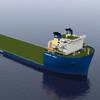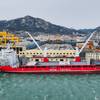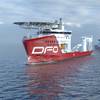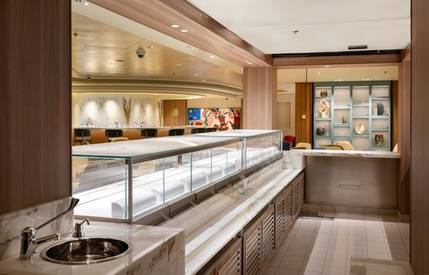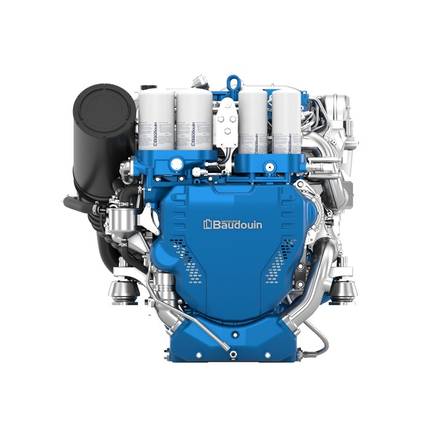GasLog Sees Tighter LNG Shipping Market
GasLog, an international owner, operator and manager of liquefied natural gas (LNG) carriers, is predicting a tighter LNG shipping market, as increasing United States LNG output combines with a seasonal uptick in demand for gas, resulting in rising demand for shipping and higher utilization of the global fleet.
These underlying trends in the LNG commodity and shipping markets point towards a structurally tighter market through 2020 and into 2021.
As of October 28, 2019, the LNG fleet and orderbook (excluding floating storage and regasification units (FSRUs) and vessels with capacity below 100,000 cbm) stood at 507 and 110 vessels, respectively, as estimated by Poten, with the orderbook representing 22% of the on-the-water fleet, unchanged from the beginning of 2019.
Out of the LNGCs in the current orderbook, 68, or 62%, are chartered on multi-year contracts. There have been 37 vessels ordered thus far in 2019, including 13 during the third quarter, compared to a total of 63 in 2018, suggesting that the pace of newbuild ordering continues to moderate.
According to Wood Mackenzie, global LNG supply totaled 90 million tonnes (mt) in the third quarter of 2019, a 2% increase from the second quarter and 11% growth year-on-year. During the third quarter, growth from new U.S. projects (Cameron, Corpus Christi Train 2 and Freeport) and the ramp-up of the Prelude project in Australia offset continued under-performance from plants in Indonesia and Malaysia and maintenance activities at PNG LNG, Sakhalin-2, Peru LNG and Sabine Pass.
Compared to the third quarter, supply is expected to grow by 6%, to 95 mt, in the fourth quarter of 2019, principally reflecting a full quarter of production from the U.S. projects mentioned above, as well as initial production from the Elba Island facility.
For 2019, Wood Mackenzie estimates annual LNG supply at 364 mt, which represents 12% growth over 2018. Supply is expected to grow by a further 7% in 2020 with the addition of further trains at the Cameron, Freeport and Yamal LNG (Russia) projects.
During the third quarter, the Calcasieu Pass project (10 million tonnes per annum, or mtpa) in the U.S. and Arctic LNG-2 reached a Final Investment Decision (FID).
Arctic LNG-2, at 19.8 mtpa of nameplate capacity, is the single largest project sanction in the history of the LNG industry. Combined with projects approved earlier in the year, 2019 has set a record for LNG FIDs, totaling 63 mtpa year-to-date and surpassing the 2005 record of 46 mtpa.
In addition, the 2.1 mtpa Woodfibre LNG project in Canada is expected to reach FID by the end of 2019, while ExxonMobil recently awarded engineering contracts for the 15.2 mtpa Rovuma LNG project ahead of an expected FID in 2020. In total, Wood Mackenzie expects 115 mtpa of new capacity to commence production between 2020 and 2024.
Global LNG demand was 87 mt in the third quarter of 2019, compared with 78 mt in the third quarter of 2018, an increase of 10%, according to Poten.
European imports accounted for much of the growth, rising 8 mt year-over-year (or approximately 100%), while demand from Northeast Asia (Japan, China, South Korea and Taiwan) was approximately flat.
For the twelve months ending September 30, 2019, LNG demand was 351 mt, compared with 308 mt for the twelve months ending September 30, 2018, an increase of 14%. Demand from Europe was particularly strong, growing by 36 mt, or 105%, while China’s demand growth was also noteworthy, rising 11 mt, or 22%.
The global gas market remains well-supplied, given the combination of ample inventories following higher-than-average temperatures in the 2018/19 winter and LNG supply growth so far this year. This has resulted in further inventory builds, notably in Europe where storage is currently at 98% of capacity, according to Gas Infrastructure Europe, and sustained pressure on gas pricing, with European and U.K. gas prices recently touching their lowest levels since 2009.
Similarly, Asian LNG prices are currently c.40% below 2018 levels. However, the combination of low gas prices and rising carbon prices have improved the competitiveness of gas as a fuel for power generation compared to coal, particularly in Europe.
During the third quarter of 2019, gas-fired power generation in Europe increased 31% year-on-year, accounting for 21% of total power generation compared to 16% a year earlier, according to Bloomberg.
Notably, Spain’s gas demand for power in September was up 128% year-on-year, as gas accounted for 27% of the power mix, with coal at just 2%, according to Spain’s national grid operator Enagás. A similar trend in the Netherlands has prompted German utility company RWE AG to re-commission a 1.1 gigawatt (GW) gas-fired power plant by 2020.
A deteriorating macroeconomic outlook, particularly in China, could present a near-term headwind for LNG demand by reducing natural gas consumption growth. However, the long-term fundamentals for gas and LNG demand growth remain very attractive, underpinned by continued energy demand growth and the significantly better emissions profile of gas versus coal.
The most recent example of this was a proposal by the South Korean government to address air pollution by significantly reducing coal-fired power generation from December 2019 to March 2020.
In addition, Wood Mackenzie recently forecast that Europe’s gas import dependency and call on LNG imports will continue to grow, due to falling domestic production in many countries and declining pipeline flows from North Africa and Central Asia, as well as potential limits on Russia’s share of European gas imports.



